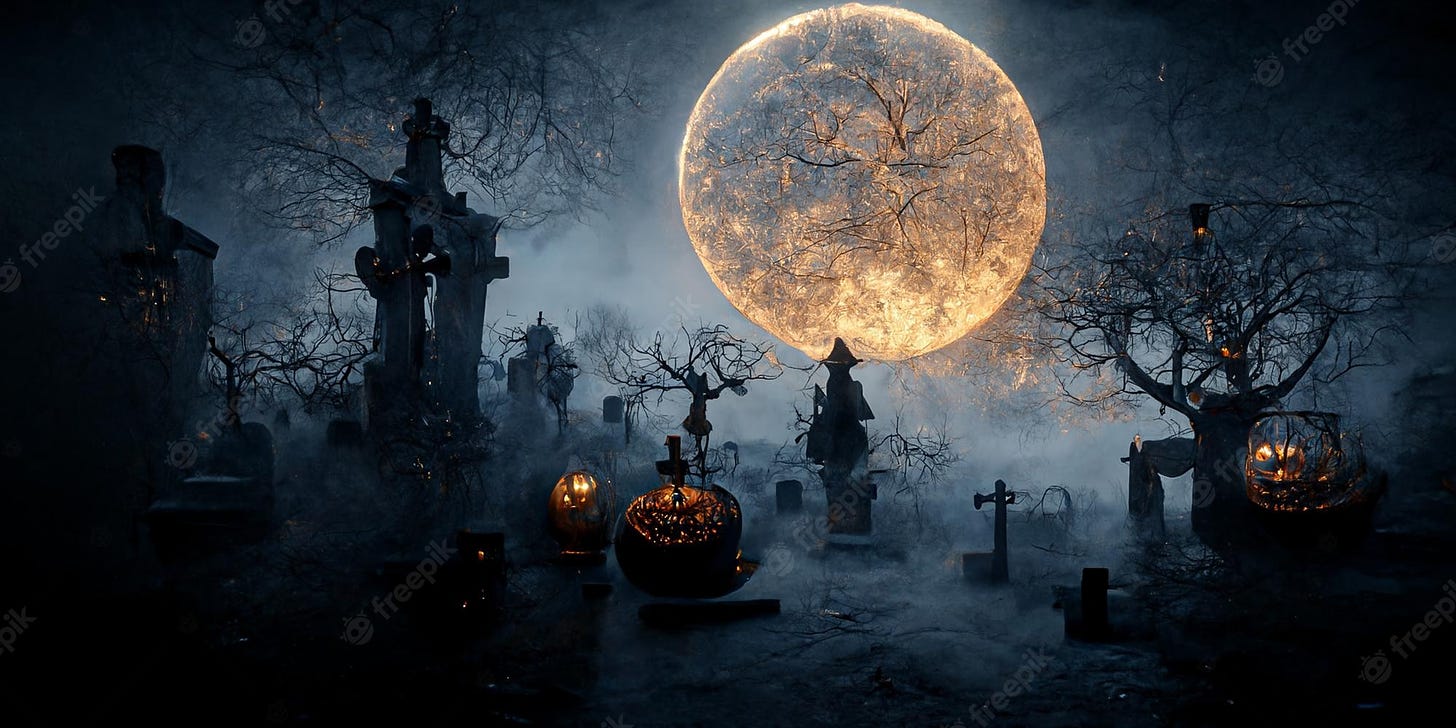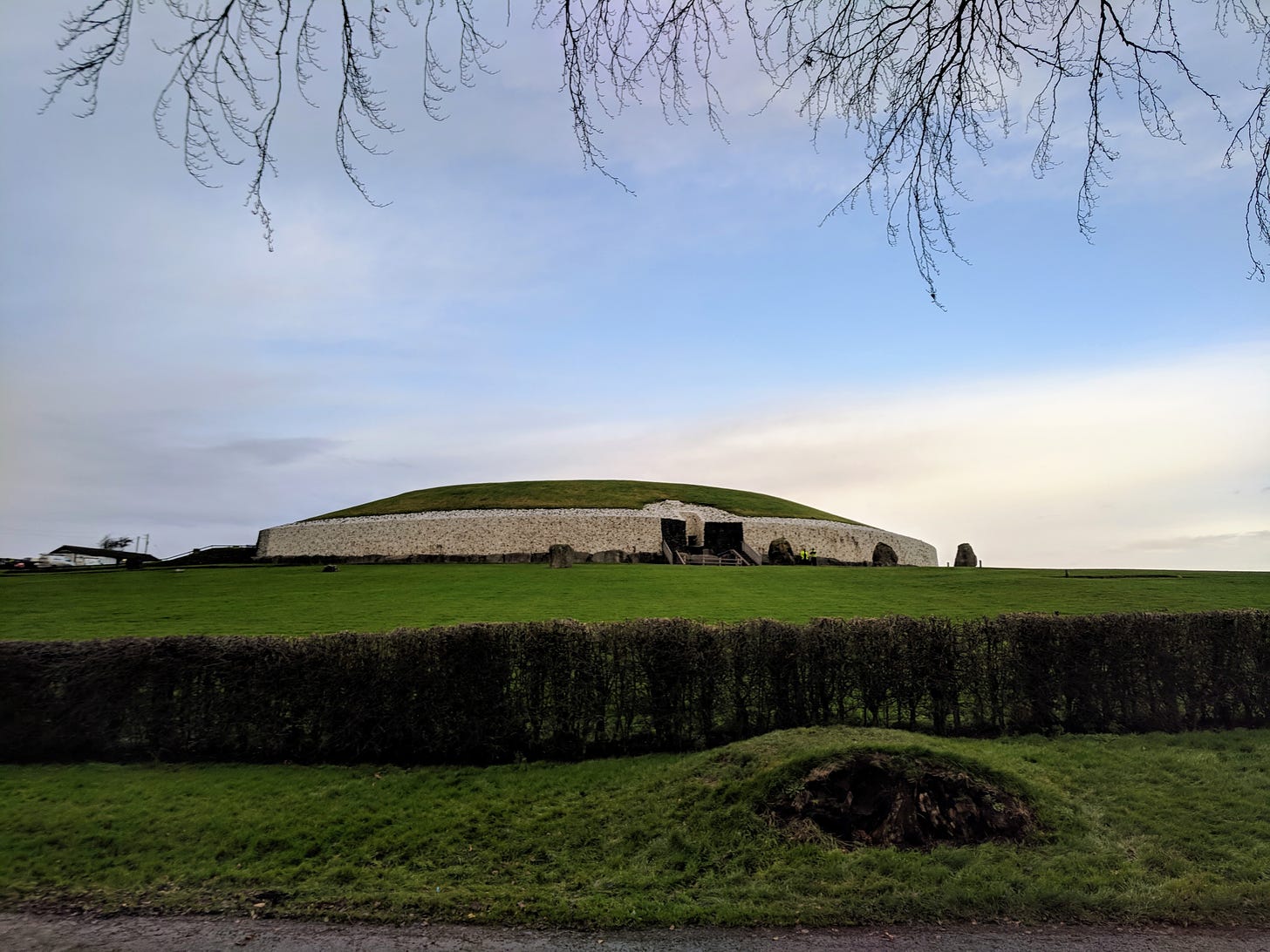Samhain - the Descent into Darkness
As one of the cross quarter days of the ancient Irish calendar, Samhain (SAH-win) marks our descent into the darkness of winter, the internal time of gathering our vitality.
Many know that our modern holiday of Halloween is derived from the Gaelic festival of Samhain. What may be less known is the relevance of this holiday to the spiritual lives of the people and its reflection to the culture’s perpetual tracking of the natural cycles of the Earth and Sky.
Samhain, as a cross quarter day, marks the midway point between the Autumn Equinox and the Winter Solstice. These two Latin terms describe the positioning of the sun upon the horizon at sunrise and sunset at key points throughout the span of a year. The cross quarter days mark the corners of the year, or the in between space. For this reason, presumably, they were imbued with greater power to the ancient Irish and were thus more culturally important.
Samhain can be translated as “summer’s end”, and Samhna refers to the month of November. However, I would imagine that there are multiple meanings layered in as is often the case with the Irish language, particularly Old Irish.
Although written Irish history is particularly rich, the folk and oral traditions were vastly richer, as would be the case when the materials for writing were far less available to the common person. Although Samhain is often mentioned in the recorded folk history, tales, and legends, it is something far less commonly mentioned within the written history of Ireland. But as the Irish people (who were already a traveling people going back into great antiquity) were forcibly expelled from their homeland under British invasion and occupation (led by Oliver Cromwell) beginning in the 17th century, they began (or shall I say, resumed) exporting their culture across the globe.
What we do know about Samhain from the recorded folk history is that it was considered a time of ritual peace. All weapons were to be laid down at this time as the entire nation (or collective of kingdoms, depending on the era) came together in celebration. The festivities gathered the great warriors, poets/bards, musicians, and others to the great hall at Teamhair (Teh-VIR), near the Hill of Tara, along the River Boyne.
The River Boyne (Irish, Bóinne: literally, “the middle of the cow”; however, spoken in Irish how it’s written in English we have, Bainne, “milk”) is the spiritual nexus of the land of Ireland. In its 4 divisions, the Boyne emerges within the eastern province of Leinster and flows northeasterly to reach the Irish Sea. It is said that the Boyne flows across Ireland like the Milky Way (Bealach na Bó Finne, “the way of the cow’s white milk”), telling us a story of creation and the flow of life just as she does unto the sea.
Seated within the heart of the Boyne Valley is a place called Brú na Bóinne. It’s modern name is Newgrange. This ancient mound (often referred to as a passage tomb) is claimed to be @5,500 years old (I feel it is much older). At the end of a roughly 75 foot entrance portal (in which one must duck and sway to move past the large rocks lining the entrance), one enters an open vaulted chamber which is covered by massive megaliths overlaid upon each other to create a weather-proof roof. Within the chamber are various petroglyphs and large, smooth rocks used, most certainly, in ritual and ceremony.
Within the chamber, upon the morning of the winter solstice (“Grianstad an Gheimhridh”), if the clouds aren’t covering the horizon, a beam of sunlight miraculously penetrates the gloomy darkness of the inner chamber from an open box just above the doorway. For a short period of time the inner chamber is illuminated by the sun. This phenomenon persists over the 4 days of the sun’s standstill at sunrise.
Here, the interplay of the masculine (sun) and feminine (earth) principles are combined in sacred creation. At the depth of the greatest darkness lives the greatest potency for creation.
At the juncture marked by Samhain, the sun and earth move into this sacred final descent into darkness, gathering and focusing life energy in order to bring forth life anew.
In celebration, our ancestors return to us (ever so subtly) at this juncture to mark the occasion and emphasize for us the importance of what lay ahead. Should we not harvest what we have sown to take us into the journey into the dark, we may not have enough to return whole to the other side (Imbolc, in early February - “in the belly” to be birthed).
Thus, our descent into the darkness is a natural course, one to be embraced. What lay within the darkness for each of us? Discovery undoubtedly, however, fears, too, await us.
Self-reflection, down time, through the autumn season brings us closer to shadows within ourselves, prepares us for the proper expunging of what no longer serves and the embracing of what seeks the light from deep within us.
In celebration, we accept that we are not perfect, nor will this process ever be. But by embracing the natural flow of the life force moving within us - and all throughout the natural world around us - we may move into a deeper state of acceptance of ourselves, an acceptance of our power, and our ability to create anew.




